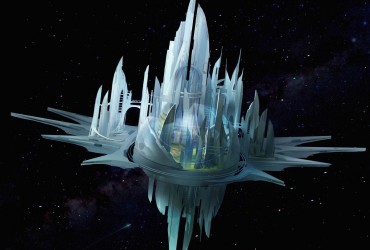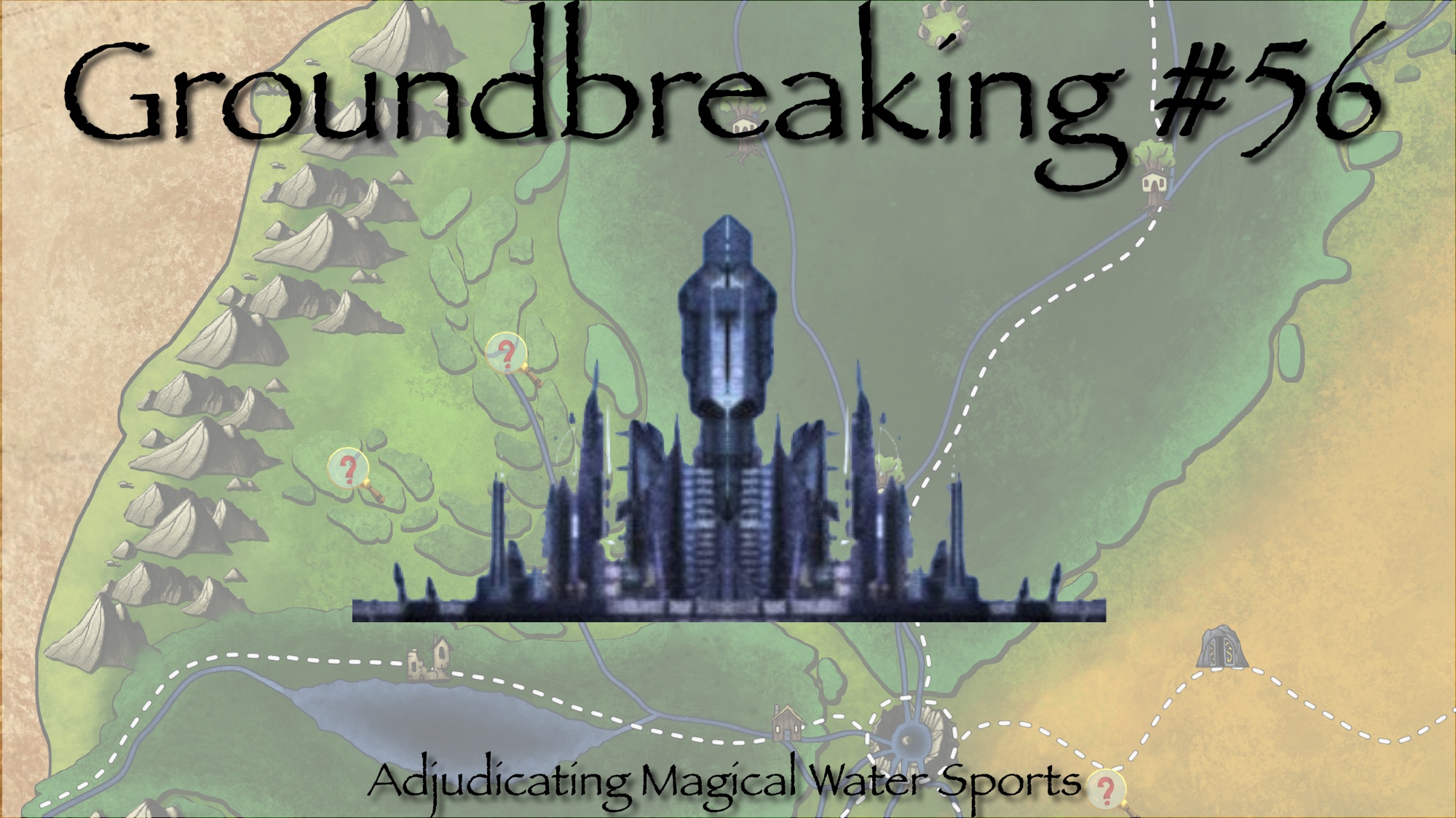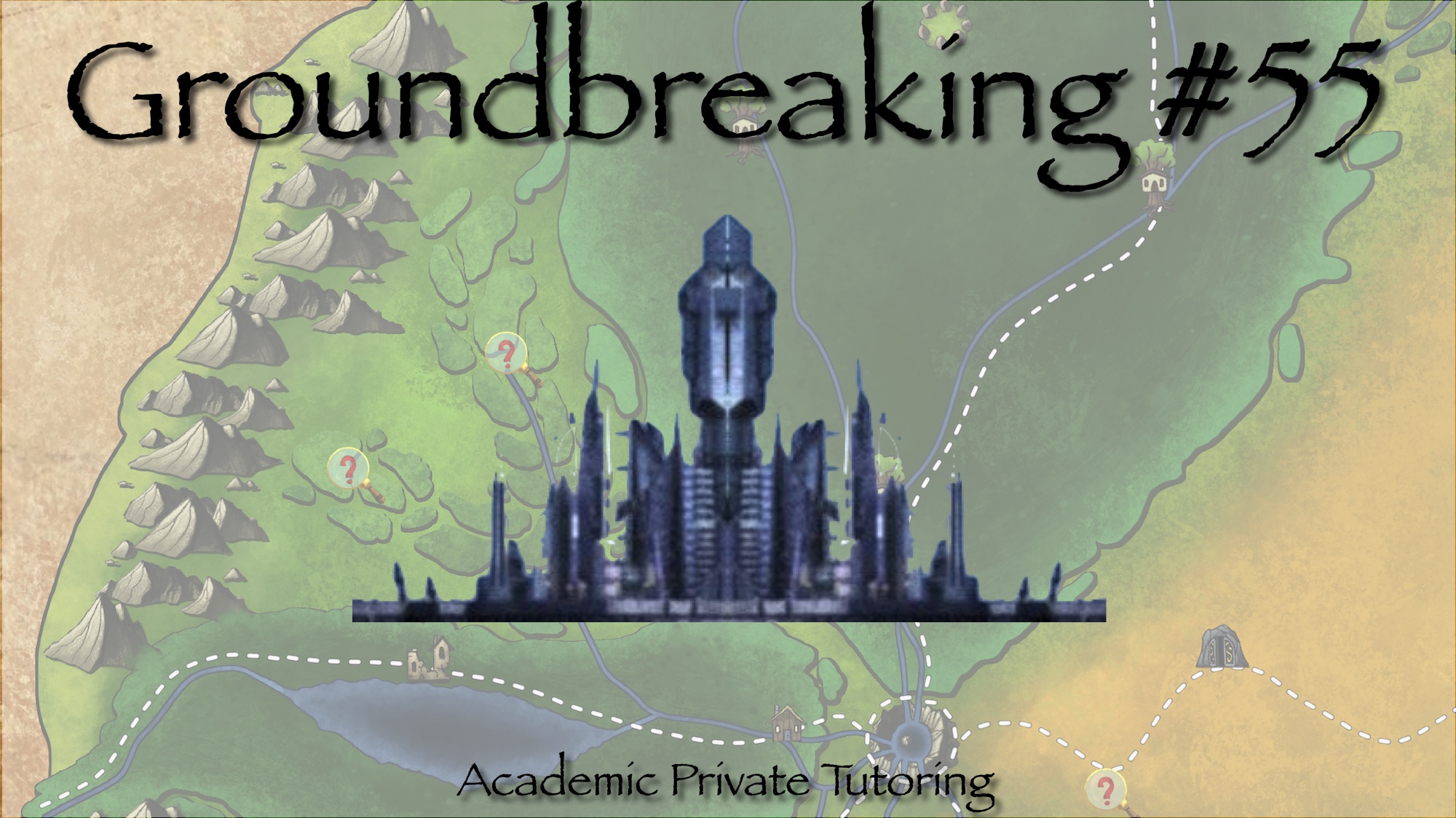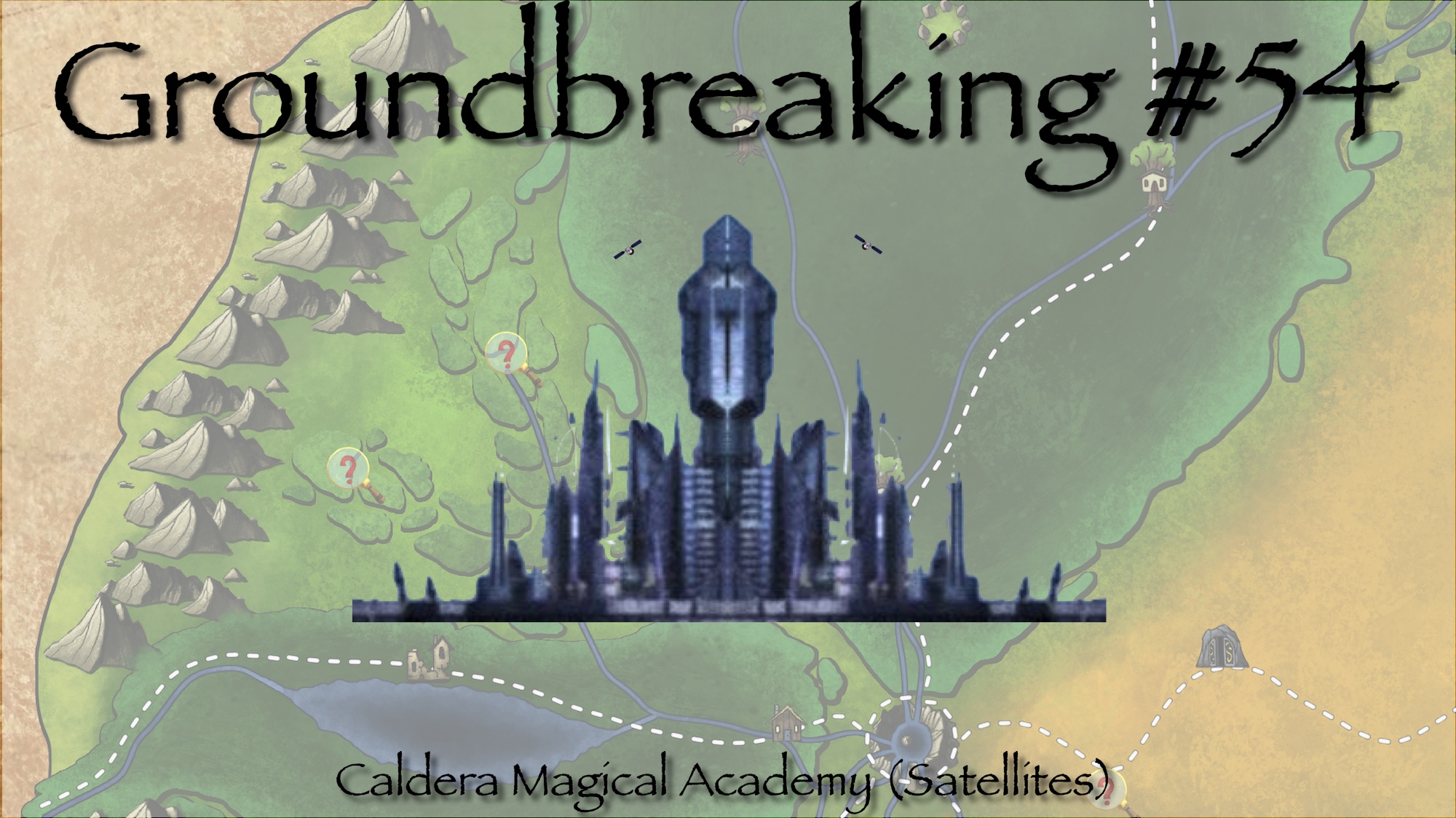What happens when your initial concept or description of something doesn’t jive with the actual idea you choose to develop? You go with the better idea while improvising a retcon, including reasons for the disparity, or simply saying “oops!”
Randal here, and we are back for more Groundbreaking. My initial blurb on the farmlands way back in “episode one” mentioned that the farmlands were “steppe-like” plains. While I didn’t completely break with that, last time I did describe the area differently, calling them “ribbon-like” before ultimately having them be terraformed into a terraced format. When I realized it, I thought about going back and fixing it, but part of this process is about learning, right?
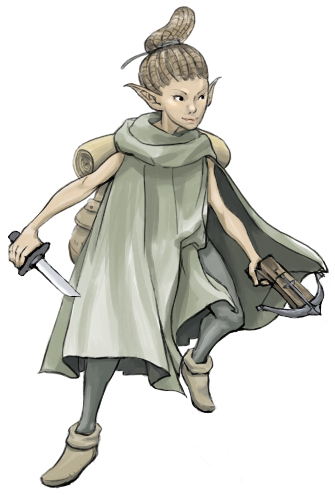 As the farmlands settled into their current configuration (terraced areas bordered by canals that both marked ownership and provided transportation; as seen previously), one would think that the families that worked the lands would settle into a pleasant, if boring, routine. One, and all, would be wrong. One of halfling families that trained the ankhegs began to feel that were better than the other families, ceasing to work any of their farms and relied on their ankhegs to supply them with income. This created a series of events that changed the area in a number of ways while also making it into a more diverse area.
As the farmlands settled into their current configuration (terraced areas bordered by canals that both marked ownership and provided transportation; as seen previously), one would think that the families that worked the lands would settle into a pleasant, if boring, routine. One, and all, would be wrong. One of halfling families that trained the ankhegs began to feel that were better than the other families, ceasing to work any of their farms and relied on their ankhegs to supply them with income. This created a series of events that changed the area in a number of ways while also making it into a more diverse area.
Most of the farmland that was operated by halflings was operated by the two ankheg families. When the one family stopped farming, the other family thought it was a good time to take their farms and *also* increase their handler fees. This led to a dispute, which led to arguments, confrontations, and then to a small “underground” war of sorts. While they kept up appearances in front of the community, they battled directly and indirectly by sabotaging each other’s farms and nests. Over time, the families themselves shrank as members had accidents, fell victim to traps, or were attacked and eaten by “rogue” ankhegs. Many of the accidents were truly accidents, such as a tunnel collapsing while trying to set a trap against enemies. Most of the traps were set in defensive locations, and so injuries and deaths were considered justified. Setting an ankheg rogue involves getting it agitated, riled up, and using pheromones to make it uncontrollable, but to non-halflings it behaves just like an ankheg being trained does. Therefore, the community only knew that the halfling families were competing with each other and taking it too far, but they had no real context for just how far it had gone. Most of the other halflings in the area either left or chose sides, essentially being adopted into the families to keep their ranks up. Eventually, neither halfling family had the size, nor the demeanor, to farm at all. It was at this point, that they made an alliance, albeit a tenuous one, to divide the farmlands up and not compete for business. To this day, the Halfling War of the Ankhegs is the most talked about “secret” in the basin.
With farmland vacancies opening up due to abandonment during this time (both halflings and humans scared for their lives), the community began to include many races from many places, and the crops began to vary widely from the barley and wheat that had dominated the region prior to the completion and adoption of the canals. A group of elves arrives with the intent to study various crops when in this region, apparently having studied the are’s plant life long before humans knew of the area. They buy a plot and divide it up to grow a great many things. A clan of gnomes moved into one of the larger plots and began to grow nuts, mostly walnuts, while a young druid came down from the mountain and used his magics to manage a field of sugarcane. To protect his land and sugarcane from predators, and rogue halflings and ankhegs, the druid convinces a friendly scrag from the hidden valley to relocate and work for him. Dwarves from mines to the east decided to splinter their clan after a flood, in hopes of creating better crops for the brewery that is being built in the caldera. While trying to negotiate a plot of land, they hear rumors about a troll nearby and set out to find it. Tired of trying to navigate the canals in simply plank barges or canoes, or worse, swimming, the dwarves use their engineering insight to build better barges for hunting in the canals that divide up the farmlands. After finally catching up to the troll, its druid employer sets the record straight with the dwarves, which requires many assurances. Ultimately he is able to convince them that perhaps they would best benefit the area, and better enjoy their work, if they were to use their skills to create, maintain, and operate barges of their own design.

These major events, along with many smaller ones, have turned the southern farmlands into a hub of trade and commerce that mirrors (granted at a much smaller scale) that of some great metropolitan port cities. The river runs south along the western side of the farmlands, and thus the majority of the markets are held in this region, spaced every couple miles along intersections of the river, the canals, and the major road that passes through while branching off to the east. Humanoids from all walks operate stalls with licenses that list which farmers they may buy from, which barges they may utilize for transport, and which halfling family they may use for protection; all based on location. One of the favorite stories told at taverns throughout the region is that of the time that a dwarven bargemaster, a gnomish treeshaker, an ankheg riding halfling, and a human druid and his pet scrag fought together to save a winter festival from a clan of werewolves.
I think I just managed to merge the farmlands with Venice and throw in a little mafia while I was at it …
The Rumor Mill
Each of the following rumors can be learned by spending an hour or more gathering information from locals. The DC listed is the target DC to determine if the rumor is true (T), false (F), or nobody knows (?).
The Dwarven Bargemasters
DC 10 – (F) They are working for the halflings to price fix.
DC 15 – (F) They are convinced that the scrag is hiding something nefarious.
DC 20 – (?) They are outcasts from their clan and too embarrassed to do traditional work.
DC 25 – (T) Their engineering has created truly unique barges.
DC 30 – (?) They are working with the gnomes on a newer water transit system.
The Druid and the Scrag
DC 10 – (F) The druid employs the scrag dishonestly, tricking him into being a slave.
DC 15 – (T) The scrag was injured by some river creature in the hidden valley to the west.
DC 20 – (?) The scrag is a reincarnated friend of the druid.
DC 25 – (T) The scrag can be seen under certain canal bridges.
DC 30 – (T) The scrag is secretly cataloguing all of the ankheg tunnels.
Please keep the name ideas coming in to our Discord server https://discord.gg/Rt79BAj. After we get a handle on all of the locations, I will be picking names from those submitted to help flesh out the history of the region!




